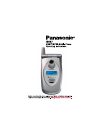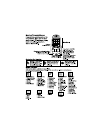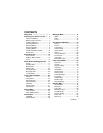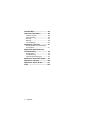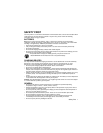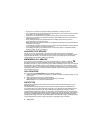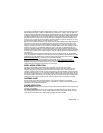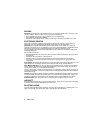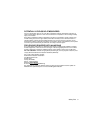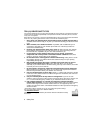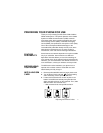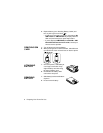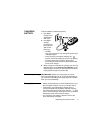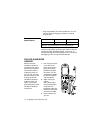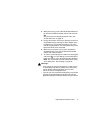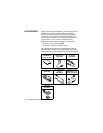
Safety First 3
The exposure standard for wireless mobile phones employs a unit of measurement known as the
Specific Absorption Rate, or SAR. The SAR limit set by the FCC is 1.6W/kg. Tests for SAR are
conducted using standard operating positions specified by the FCC with the phone transmitting at
its highest certified power level in all tested frequency bands. Although the SAR is determined at
the highest certified power level, the actual SAR level of the phone while operating can be well
below the maximum value. This is because the phone is designed to operate at multiple power
levels so as to use only the power required to reach the network. In general, the closer you are to
a wireless base station antenna, the lower the power output.
Before a phone model is available for sale to the public, it must be tested and certified to the FCC
that it does not exceed the limit established by the government-adopted requirement for safe
exposure. The tests are performed in positions and locations (e.g., at the ear and worn on the
body) as required by the FCC for each model. The highest SAR value for this model phone when
tested for use at the ear is 0.982 W/kg and when worn on the body, as described in this user
guide, is 0.364 W/kg. (Body-worn measurements differ among phone models, depending upon
available accessories and FCC requirements). While there may be differences between the SAR
levels of various phones and at various positions, they all meet the government requirement for
safe exposure.
The FCC has granted an Equipment Authorization for this model phone with all reported SAR
levels evaluated as in compliance with the FCC RF emission guidelines. SAR information on this
model phone is on file with the FCC and can be found under the Display Grant section of http://
www.fcc.gov/oet/fccid after searching on FCC ID NWJ10A008A.
Additional information on Specific Absorption Rates (SAR) can be found on the Cellular
Telecommunications Industry Association (CTIA) web-site at http://www.wow-com.com
.
Caution: All Panasonic branded accessories are tested and comply with FCC RF exposure
requirements. Non-Panasonic accessories may not comply.
BODY-WORN OPERATION
This device was tested for typical body-worn operations using the carry case model:
EB-YKD87, which provides 3.0 cm. separation distance from the body. This device was also
tested for body-worn operations with the back of the phone kept 1.5 cm. from the body. To
maintain compliance with FCC RF exposure requirements, use only belt-clips, holsters or similar
accessories that maintain a 1.5 cm. separation distance between the user’s body and the back of
the phone, including the antenna. The use of belt-clips, holsters and similar accessories should
not contain metallic components in its assembly. The use of accessories that do not satisfy these
requirements may not comply with FCC RF exposure requirements, and should be avoided.
ANTENNA CARE
Do not use the phone with a damaged antenna. Use only the supplied or an approved
replacement antenna. Unauthorized antennas, modifications, or attachments could damage the
phone and may violate FCC regulations.
PHONE OPERATION
Normal Position: Hold the phone as you would any other telephone, with the antenna pointed up
and over your shoulder.
For Efficient Operation: For your phone to operate most efficiently, do not touch the antenna
unnecessarily when the phone is in use. Contact with the antenna affects call quality and may
cause the phone to operate at a higher power level than otherwise needed.



